What is Log Insert Lag Time on FortiAnalyzer?
You have recently grouped multiple FortiGate devices into a single ADOM. System Settings > Storage Info
shows the quota used.
What does the disk quota refer to?
A playbook contains five tasks in total. An administrator runs the playbook and four out of five tasks finish successfully, but one task fails. What will be the status of the playbook after it is run?
Which two statements are correct regarding the export and import of playbooks? (Choose two.)
In the FortiAnalyzer FortiView, source and destination IP addresses from FortiGate devices are not resolving to a hostname.
How can you resolve the source and destination IP addresses, without introducing any additional performance impact to FortiAnalyzer?
Which two statements about high availability (HA) on FortiAnalyzer are true? (Choose two.)
What is the recommended method of expanding disk space on a FortiAnalyzer VM?
What are analytics logs on FortiAnalyzer?
Refer to the exhibit.
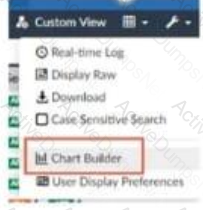
What is the purpose of using the Chart Builder feature on FortiAnalyzer?
If you upgrade your FortiAnalyzer firmware, what report elements can be affected?
How does FortiAnalyzer retrieve specific log data from the database?
You are trying to initiate an authorization request from FortiGate to FortiAnalyzer, but the Security Fabric window does not open when you click Authorize.
Which two reasons can cause this to happen? (Choose two.)
What is required to authorize a FortiGate on FortiAnalyzer using Fabric authorization?
Which SQL query is in the correct order to query the database in the FortiAnslyzer?
For which two SAML roles can the FortiAnalyzer be configured? (Choose two.)
Which two statements regarding FortiAnalyzer log forwarding modes are true? (Choose two.)
Refer to the exhibits.
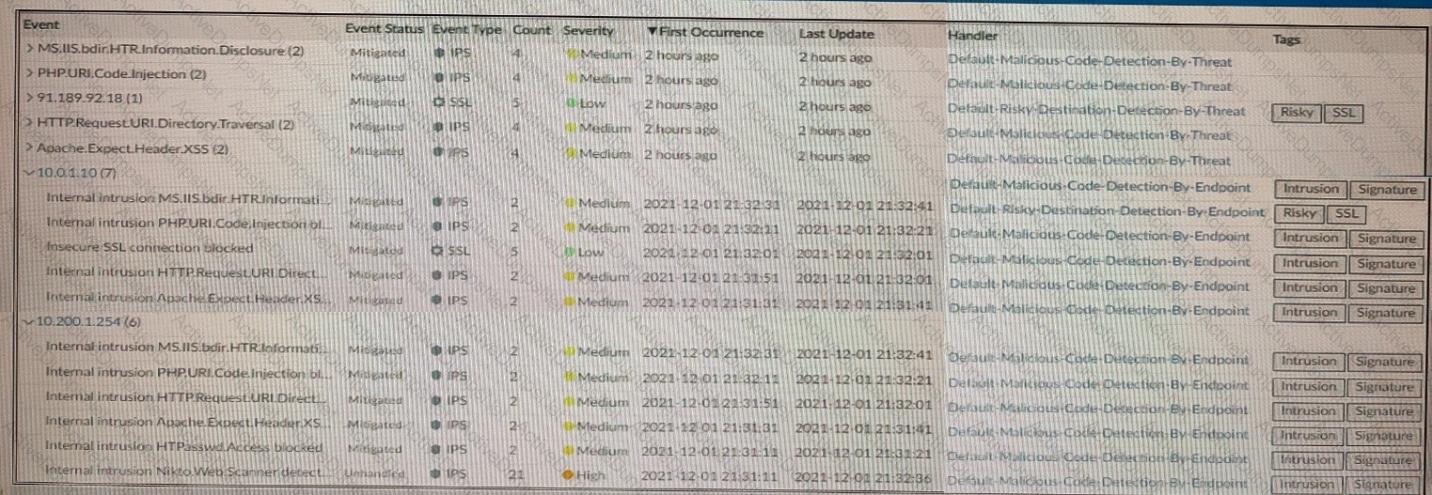

How many events will be added to the incident created after running this playbook?
Which two statements are true regarding FortiAnalyzer operating modes? (Choose two.)
Which two statements are true regarding log fetching on FortiAnalyzer? (Choose two.)
Which process is responsible for enforcing the log file size?
What does the disk status Degraded mean for RAID management?
Which two actions should an administrator take to view Compromised Hosts on FortiAnalyzer? (Choose two.)
Which two statements are true regarding the outbreak detection service? (Choose two.)
Which statements are correct regarding FortiAnalyzer reports? (Choose two)
Which statement about the FortiSOAR management extension is correct?
Which clause is considered mandatory in SELECT statements used by the FortiAnalyzer to generate reports?
Which statement correctly describes the management extensions available on FortiAnalyzer?
Refer to the exhibit.
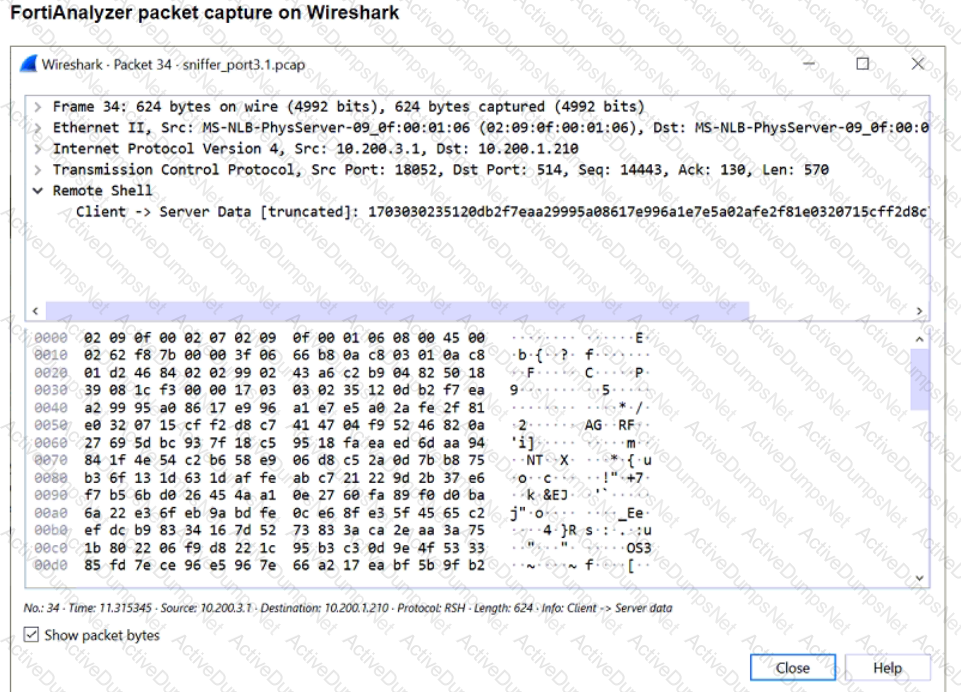
Which image corresponds to the packet capture shown in the exhibit?
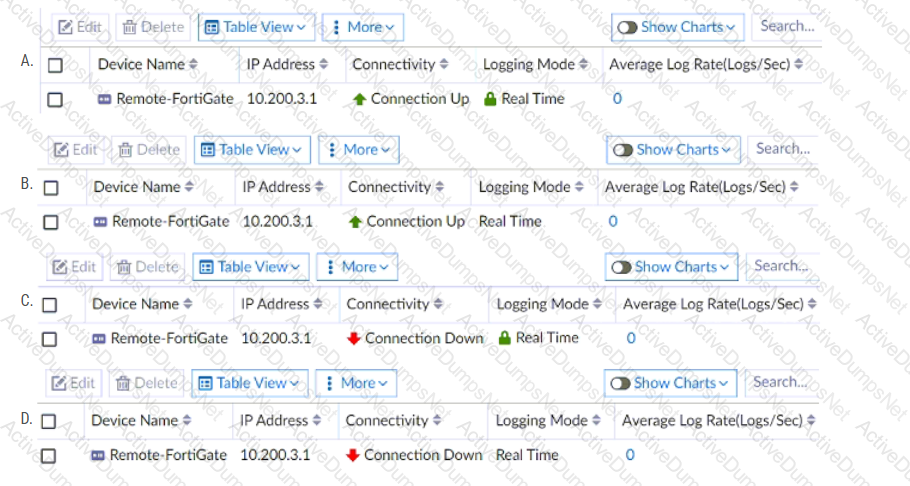
A rogue administrator was accessing FortiAnalyzer without permission, and you are tasked to see what activity was performed by that rogue administrator on FortiAnalyzer.
What can you do on FortiAnalyzer to accomplish this?
Which statement when you are upgrading the firmware on an HA cluster made up of three FortiAnalyzer devices is true?
Refer to the exhibit.
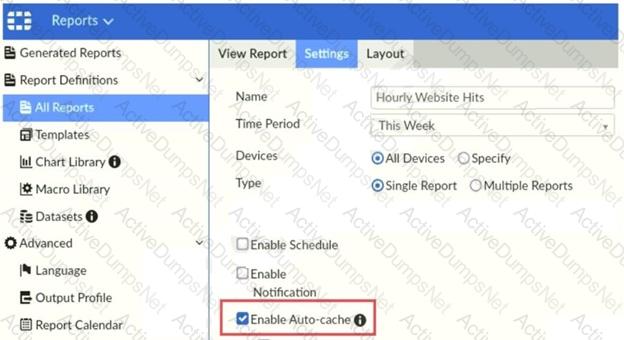
Which two statements are true regarding enabling auto-cache on FortiAnalyzer? (Choose two.)
Which two statements are true regarding FortiAnalyzer log forwarding? (Choose two.)
What is the best approach to handle a hard disk failure on a FortiAnalyzer that supports hardware RAID?
Which two of the available registration methods place the device automatically in its assigned ADOM? {Choose two.)
Which statements are true regarding securing communications between FortiAnalyzer and FortiGate with SSL? (Choose two.)
An administrator, fortinet, can view logs and perform device management tasks, such as adding and removing registered devices. However, administrator fortinet is not able to create a mail server that can be used to send alert emails.
What can be the problem?
Which two parameters are used to calculate the Total Quota value available on FortiAnalyzer? (Choose two.)
Refer to the exhibit.

Based on the output, what can you conclude about the FortiAnalyzer logging status?
If you upgrade the FortiAnalyzer firmware, which report element can be affected?
A play book contains five tasks in total. An administrator executed the playbook and four out of five tasks finished successfully, but one task failed. What will be the status of the playbook after its execution?
Which two statement are true regardless initial Logs sync and Log Data Sync for Ha on FortiAnalyzer?
Which two statements regarding ADOM modes are true? (Choose two.)
Which daemon is responsible for enforcing the log file size?
Which two methods can you use to send event notifications when an event occurs that matches a configured
event handler? (Choose two.)
Which two statements about log forwarding are true? (Choose two.)
What is the purpose of the FortiAnalyzer command diagnose system print netstat?
An administrator has moved a FortiGate device from the root ADOM to ADOM1.
Which two statements are true regarding logs? (Choose two.)
Which FortiAnalyzer feature allows you to use a proactive approach when managing your network security?
Which two methods are the most common methods to control and restrict administrative access on FortiAnalyzer? (Choose two.)
Which two settings must you configure on FortiAnalyzer to allow non-local administrators to authenticate to FortiAnalyzer with any user account in a single LDAP group? (Choose two.)
Logs are being deleted from one of the ADOMs earlier than the configured setting for archiving in the data
policy.
What is the most likely problem?
Which statements are true regarding securing communications between FortiAnalyzer and FortiGate with IPsec? (Choose two.)
Which two elements are contained in a system backup created on FortiAnalyzer? (Choose two.)